| |
Trinitat
Nova |

 |
27-10-1999
Neighbourhood
on the western side of the Meridiana Avenue which separates it from Trinitat
Vella (see Line 1).
|
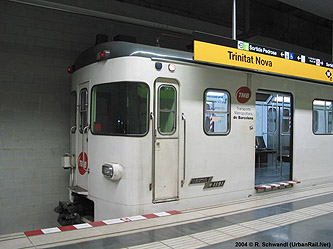
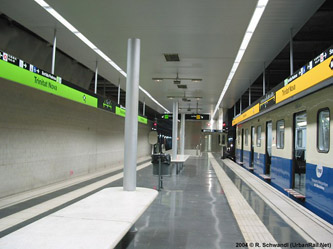
|
| |
Via
Júlia |
|
19-04-1982
The street
of this name is a Rambla type avenue in the district of Nou Barris. Until
Oct. 1999 this station was called Roquetes which is a neighbourhood
on the foot of the Collserola mountain range that surrounds Barcelona
from north to west. The name actually means 'small rocks'. The former
station name reappeared in 2008 on the signs of a new station opened on
Line 3 between Canyelles and Trinitat Nova.
|
|
| |
Llucmajor
|
|
19-04-1982
Square named
after a town in Mallorca. This Balearic Isle gave names to several streets
in this area.
|
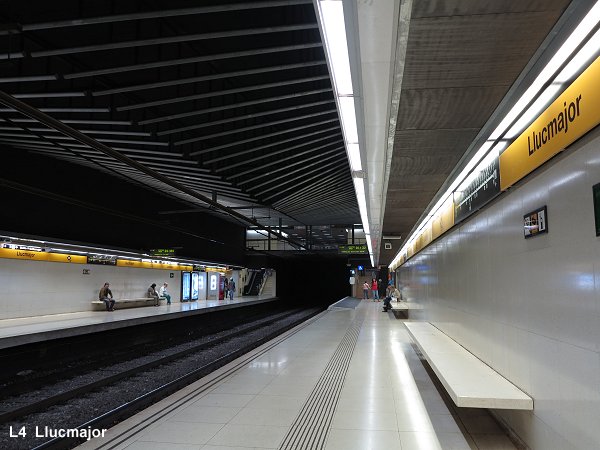 |
| |
Maragall
|

|
19-04-1982
Avenue and square dedicated to the poet Joan Maragall i Gorina (1860-1911).
|
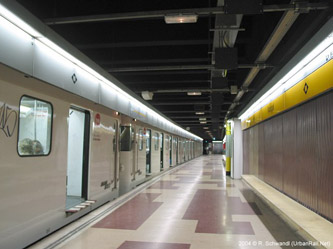 |
| |
Guinardó-
Hospital de Sant Pau |
|
16-05-1974
There's a
park, a street, a square and even half a district with this name. It's
derived from an old manor house, which has its name from an old form of
'guineu', which means 'fox'.
Future transfer
to line L9
'Hospital
de Sant Pau' added to the station name in 2009 after the hospital complex
was rebuilt and the main entrance relocated closer to this station than
that on L5.
|
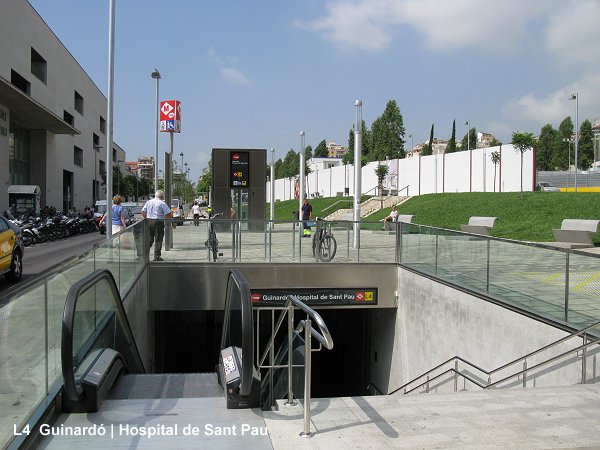
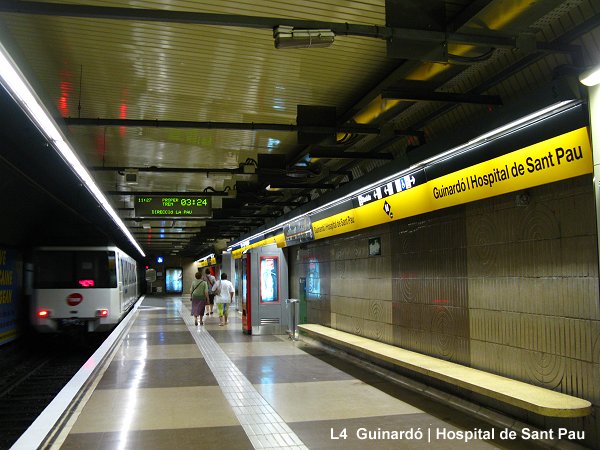
|
| |
Alfons
X |
|
16-05-1974
Square named
after Alfonso X, the Wise, king of Castilla in the 13th century.
|
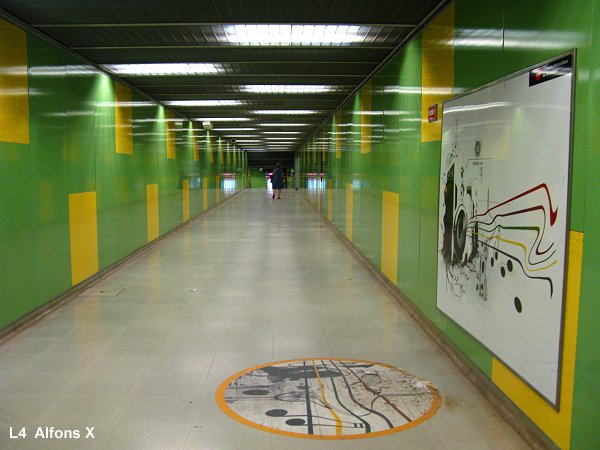
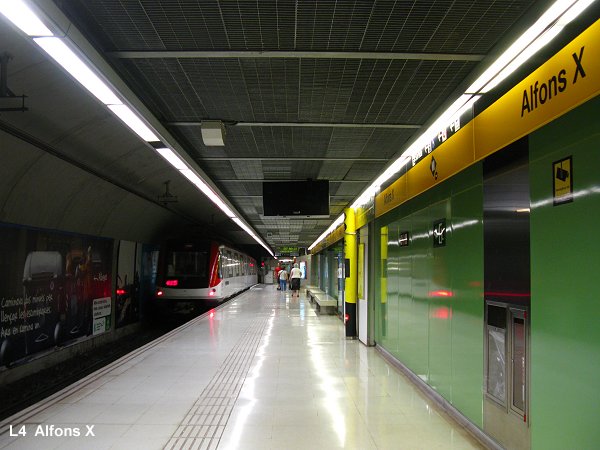
|
| |
Joanic
|
|
05-02-1973
Square called
after the owner of a former estate in Grącia, Josep Joanic.
|
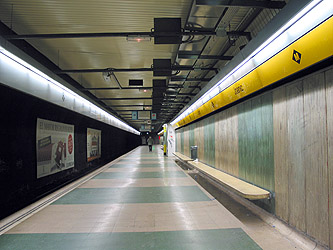 2004
2004 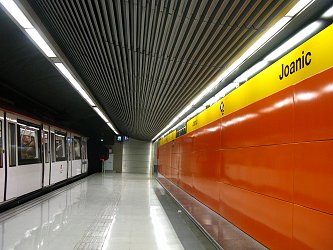 2008
2008
|
| |
Verdaguer
|

|
05-02-1973
Square paying
homage to the very important Catalan poet, Jacint Verdaguer i Santaló
(1845-1902).
|
|
| |
Girona
|
|
05-02-1973
Street dedicated
to the City of Girona, 100 km north of Barcelona.
|
|
| |
Passeig
de Gràcia |



|
05-02-1973
originally
called 'Gran Via'. See L2 and L3 for more details.
|
|
| |
Urquinaona
|
 |
19-12-1926
Square named
after a 19th century Barcelona bishop.
|
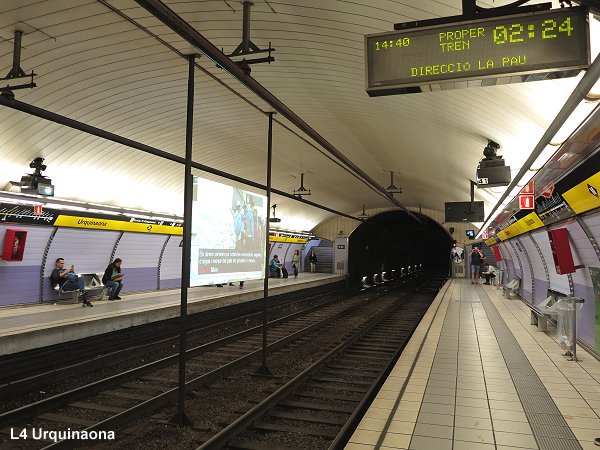
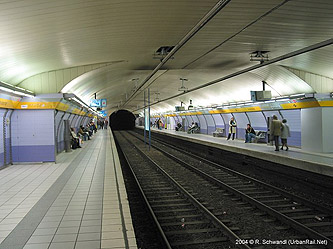
|
| |
Jaume
I |
|
19-12-1926
This man,
James I, was Count of Barcelona and King of Aragon in the 13th century.
He extended Catalan power over the Mediterranian and south along the coast.
The street bearing his name leads from the Metro station to Plaça
Sant Jaume, where the City Hall and the Catalan Government are.
|
|
| |
Barceloneta |
|
15-03-1976
This is
the name (it actually means 'small Barcelona') of a very special neighbourhood
belonging to the district of Ciutat Vella, the old town centre. It's built
on a triangle reaching out into the sea, with very narrow streets and
long but high blocks of houses.
|
|
| |
Ciutadella
Vila Olímpica
|

|
07-10-1977
In 1715,
after the Catalans lost definitely their special status within Spain,
Felipe V built a huge military fortress to control the city. It was demolished
in 1869, and the terrain used for the 1888 exhibition. After that it became
Barcelona's city park. The second part of the station name, 'Olympic Village'
was added in 1992, as the station also serves this new part of town situated
between the park and the seaside.
|
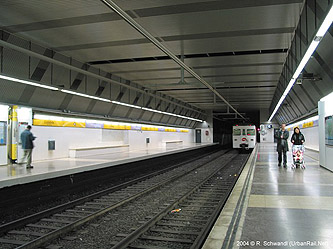 |
| |
Bogatell
|
|
07-10-1977
This station
was first called 'Pere IV' after another street. 'Bogatell' is the name
of a former river, now an underground canal taking waters into the sea.
|
|
| |
Llacuna |
|
07-10-1977
Initially
called after another street, 'Luchana', it now bears the name of a street
called 'lagoon' as this part of Sant Martí was covered by the sea
until the 15th century.
|
|
| |
Poblenou
|
|
07-10-1977
Meaning
'new village', it's quite an old part of the district of Sant Martí.
Formerly quite industrial it has been changing a lot recently, especially
along the seaside where beaches and parks have been laid out.
|
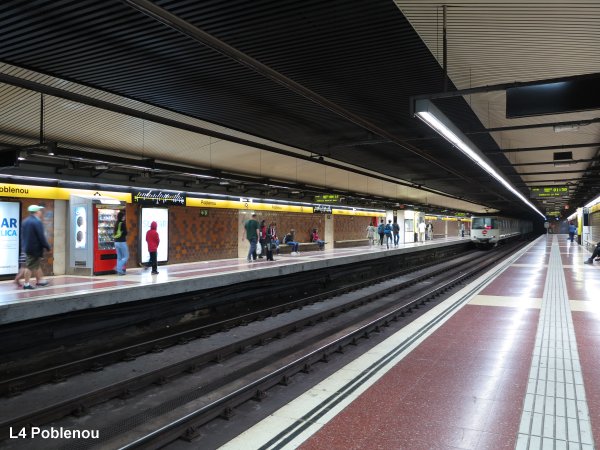 |
| |
Selva
de Mar |
 |
07-10-1977
'Forest
by the sea' is the name of a street remembering a small village of that
name in Empordà in upper Catalonia
|
|
| |
El
Maresme - Fòrum |
 |
(2003) Station
added to the existing line to serve the area developed for the 2004 Forum
of Cultures. Maresme refers to the coastal region north of Barcelona and
means 'marsh land by the sea':
|
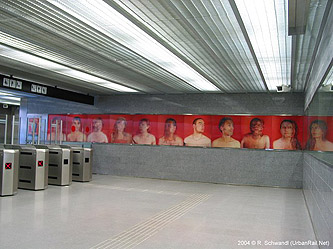
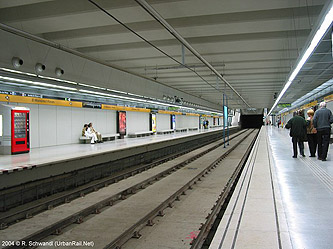
|
| |
Besòs
Mar |
|
15-10-1982
Originally
called 'Mina' after another neighborhood, the name was eventually changed
into 'Besòs Mar' - referring to the river (see next station) and
the nearby sea.
|
|
| |
Besòs
|
 |
15-10-1982
The river
Besòs is Barcelona's city limit towards the north-east. In the 60's
large areas were developed as sleeping towns, one of them called Besòs
after the river. There are projects to make the river a more pleasant
place, today it's just a sewer.
|
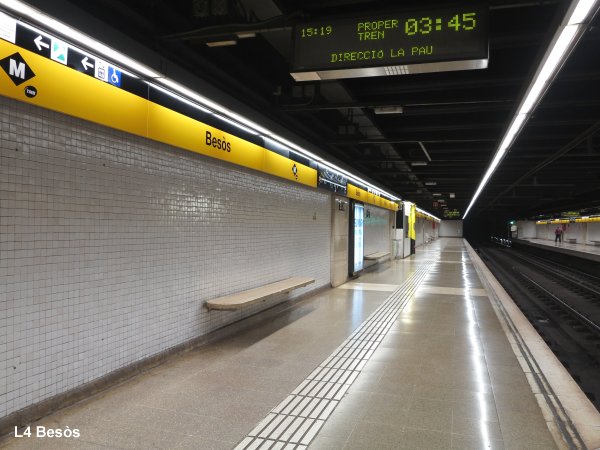 |
| |
La
Pau |
 |
15-10-1982
Meaning 'peace',
this neighborhood was built in the 60's remembering the end of the Spanish
Civil War 25 years earlier, in 1939.
|
|
| |
Santander |
|
planned |
|
| |
Estació
de Sagrera |
|
planned |
|
| |
La
Sagrera-Meridiana |
|
planned |
|
